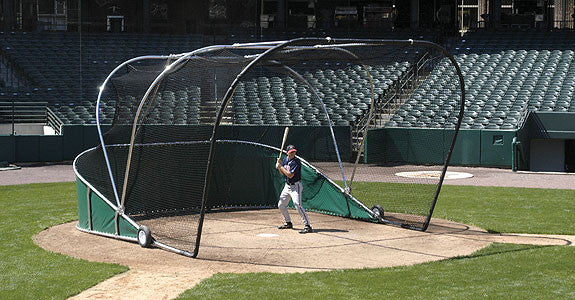Dear Coach
My 10 year old grandson has been playing baseball since he was five, with one year off last year.
Since t-ball he has had a fear of the ball. He has stepped back from catching, stepped out of the batter's box because of his fear of being hit How do we coach him to help him get over this fear?
Thank you
Granddad
Below is a stock answer for concentration and pitch recognition along with being confident at the plate.
Try it and I believe that the boy will start to hit and catch better.
For catching take way his glove and play catch with a foam ball or plastic ball then get a baseball and do the drill I talk about below. We have to get over any fear and use to the ball. Believe it or not when they first
start the glove just gets in the way so eliminate it most of the time.
As simple as this sound get a piece of plywood, prop it up at and angle, have him or us throw the ball up the board and then field it as it rolls back down.
The for fly balls or high throws, throw the ball onto a roof and catch it as it comes off, it is fun and teaches throwing and eye hand coordination. Use a rubber ball or tennis ball gives a safer aspect to it if you so
desire.
Coach Arnald Swift
Coach,
My son is a freshman in High School and played competitive baseball from March-October of last year. He will be playing JV basketball until JV Baseball starts in February. He needed the break; however, should he
be throwing before baseball practice starts in February? He’s a middle infielder and not an everyday pitcher.
Thanks,
Derek
Derek
This is a baseball and basket ball coaches answer, as I was both for a long time.
YES, only criteria is that he does not take time or effort away from his basketball ball team.
But yes he should start throwing, it is no different from running extra, weights, diet all the other things he may do out side of basketball.
I think he should play light catch from 30-40 foot for 5 days, move out to 50ft for 5 days, and so on with about 75 throws each day not don't worry about speed work on accuracy.
Then if time allow for him to get to the 110-120 ft mark then he should throw the last 10 throws of a session game speed. BUT be sure (if you are listening to me) that he has to work up to the 110 ft distance and
speed.
Let me know how it all works out.
Coach Arnald Swift
Coach
I coach a 5th grade team and a 7th grade team. My assistant coach on the 7th grade team has instructed the boys to “see the throw” before yelling “cut or no cut”. This really has confused the boys on what they should do. Should we do this at these age levels?
Jeff
I think that is normal for the throw from the outfield. The words and coaching may be a little different but what I believe is he is asking the control guy to do is wait until he see the throw to tell if it is on line, has a chance to make the put out and at what base. The control player can't not say cut, hold, cut to ? until he sees the throw.
So the works "see the throw" is telling him to wait and look at the throw and make the decision of where to go with the throw.
It strikes me as decent point, with different words.
Coach Arnald Swift.
Hello, my name is Samuel and I coach at the high school level. I’ve been curious to know what exactly what weaknesses does a coach/pitcher look for in opposing batters. If you explain to me. I feel kind of weird asking this but I really want to get better at assessing the batter so I can be an asset to my team and players. I appreciate the time and hope you respond soon. Thanks again.
Sam
=============================
Coach
That is a very interesting question one that every coach every pitcher ask himself on every batter. And if I can give you a good scientific answer that worked all the time then I would be rich because the truth is you can only guess have a good general idea. The first foremost is that you need to see the batter at the plate a couple of times and keep mental record or physical record of him so that you know how he reacted in previous times it back. If you play a team couple of times then it certainly worth keeping track of.
In general the first thing you look for is where his feet are in relationship to the plate, if he backed off the plate that we need to try to throw outside either with our fastball or breaking pitch, he'll be most susceptible to the breaking pitch he backs off the plate. If the crowds it and is very close to the plate then we need to throw fastballs on the inside. The second thing is when you see him swing his hands dip, state level, or do his arms try to raise to get even with the ball. Another thing that you might look at this is back elbow stay tucked in tight against his body like it should or does he really extend his arms. If he extended his arms and kinda sweet set it make sure you stay down and in with the pitches.
The next thing is really to have your pitcher throw strikes on the first pitch there are very few batters that will swing at the very first pitch so it's important that you though the first pitch for strike and get ahead a little bit because then you have so many more choices when the pictures and control. It doesn't matter which pitch you throw or even location on that very first pitch needs to be a strike then we can start to work on the batter.
When the batter swings as he stepped into the plate, does the step away from the plate, does he swing at pitches even whether not strikes that are high, make note if he swings at breaking pitches or doesn't swing, some batters just can't lay off the breaking pitch and some will not even swing at the breaking pitch.
If he's an aggressive batter that swings early in the count or at bad pitches and make sure you mix and change-ups and pitches off the plate. If he is a non-aggressive batter and goes deep into the count then make sure you throw strikes and don't over think this get ahead you know he's going to try to take the picture deep into the count so get ahead of him and don't worry about where the pitches just worry that it's a strike.
To be honest with you the batter is the secondary consideration it's really the picture if he can throw the strikes early in the count not get behind because all batters become good batters when they are ahead in the count.
So to kind of summarize: pay attention to the batter where his feet are, where his feet go when he swings, what type of pitches he swings at and what type of pitches as he take. These are the things that you need to take note of. After you've done this little while you're going to find there are three kinds of batters the really good ones that are just hitters and you're going to have trouble getting out, the really bad ones that are not going to hit the ball very often you're going to get out almost no matter what, the ones that you really need to look at and concentrate on are the ones that you can affect by making sure your pitcher has a good idea of where to throw, what to throw, and when to throw it. Like I said it's not really the batter as much it is the pitcher paying attention to what each individual is doing, and just as important what he has done history is a great teacher. Batters can't change very often from one time to the next.
I don't know if I've helped you are not but at least he gave you something to think about.
Coach Arnald Swift










